Seeing (and Saving) the World With Mission: Impossible – Fallout‘s Location Scout
Jaunty banter, truly insane stunts and Tom Cruise’s seemingly superhuman inability to slow down aside, one of the most arresting aspects of Mission: Impossible — Fallout are the film’s environments. As IMF agent Ethan Hunt, Cruise is chased down, on a motorcycle, through the middle of Paris, crashes through London offices only to end up thwarted on the roof of the Tate Modern (at least the view is stunning), and winds up fighting for the health of the planet on an alarmingly remote bit of rock face in India (played here by an alarmingly remote bit of rock face in Norway). From the scouting to the logistics once there, director Christopher McQuarrie and his team seemed intent on out-doing the already noteworthy locations of the five previous installments of the M:I6 franchise, and it worked.
Central to the movie are familiar locations: Berlin, New Zealand, Paris, and London. Particularly in the case of the latter two, audiences will likely recognize numerous landmarks, like L’Arc de Triomphe and the Tate Modern museum. For a film in which director McQuarrie points out that “Ethan has always been a bit of a mystery. This time I wanted to be more inside his head and feel his connection with other people,” it’s logical that much of the most important action in the story would take place in crowded areas viewers might very well know from their own lives, rather than in obscure or entirely rural corners of the globe. However, McQuarrie was adamant that the locations presented in M:I6 still be new to the series itself. Ben Piltz, the supervising locations manager, put it this way: “His take on it was, ’Find me a cool location, and I will write the scenes for it.’”
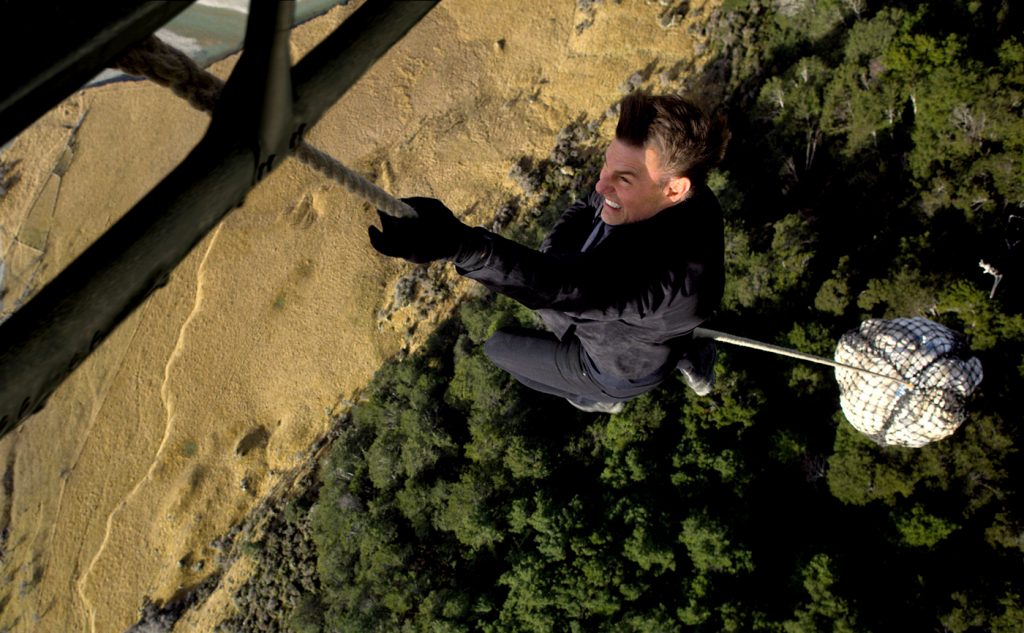
From a Norwegian mountain to a little-used section of covered canal that feeds into the River Seine, Piltz came up with a range of unfamiliar locations and unique sites within otherwise well-known destinations. This was particularly key in Paris, which both McQuarrie and Cruise, having watched a short film called Rendezvous that featured an eight-minute chase scene the city, wanted to feature. Ultimately, the city let the shoot very briefly shut down the area around L’Arc de Triomphe and the Avenue de l’Opéra leading up to the Grand Opera, but even more exceptionally, the French military allowed for use of a helicopter for some as yet unseen aerial shots of the city (Fancophiles might want to catch the movie for this reason alone).
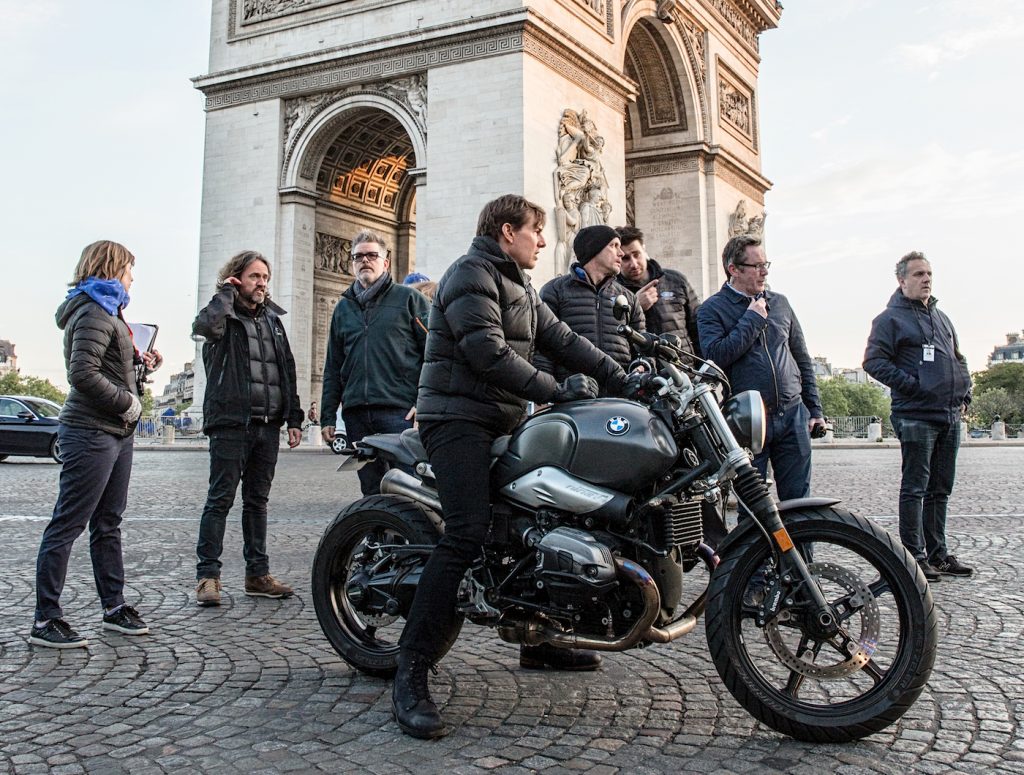
Tommy Gormley on the set of MISSION: IMPOSSIBLE – FALLOUT, from Paramount Pictures and Skydance.
A city like Paris might be filmed ad nauseum, but it’s still not everyday you see a high-speed motorcycle chase zoom past the Grand Opera or a vintage BMW M5 race down stone steps along the Seine. Likewise, a denouement on a rock face looks like it’s going down at the end of the world, because more or less, it is. Surprisingly, in working in such challenging locations, the worst hiccup came in London, in a seemingly simple rooftop chase — Cruise broke an ankle, although he was back in filming shape within six weeks. To get more insight into the process of finding locations, managing the logistics at the more impossible-seeming sites, and planning the action once there, we spoke briefly with Piltz.
Can you briefly describe your role on the film?
I start off in a creative role, helping to find all the locations, which helps develop the story line and script. As it goes on, it turns into more of a logistics role, dealing with permits, budgeting, getting the crew in and out. That said, [MI6] doesn’t work like a normal film. They write a script as we go, so the story’s constantly developing as we’re finding new locations.
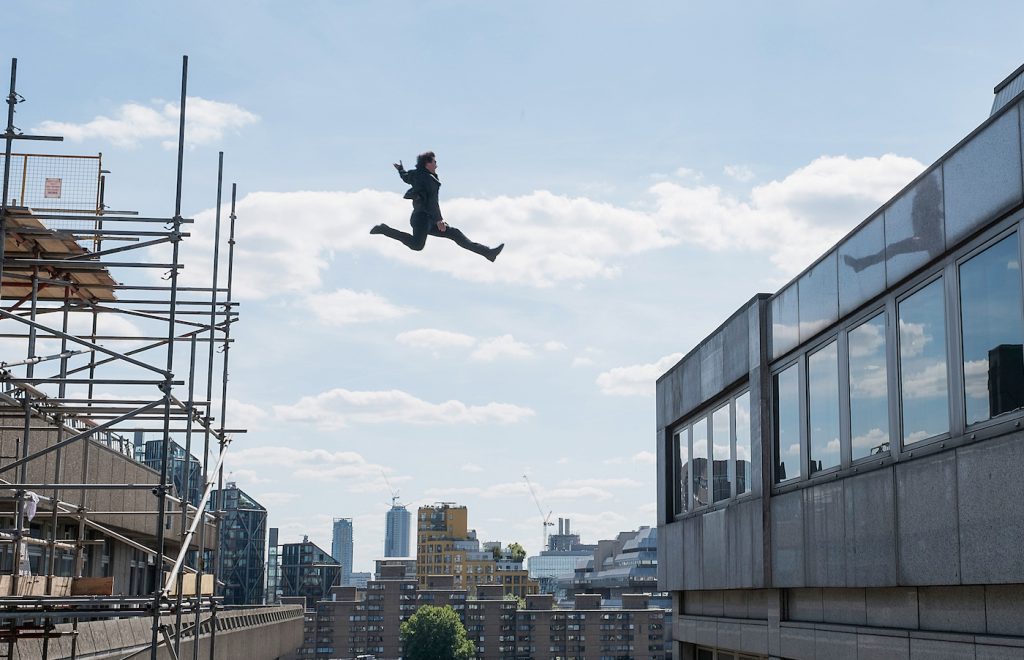
What is it like, dealing with cities like Paris and London for major shoots? Are they receptive?
It’s tricky, it takes a big team. Paris was great. They really gave us the keys to the city. We shot some amazing sequences, which we managed to do there in the middle of the week, with Paris operating around us. Working with Tom and Chris, you’re working with cinema greats, which opens doors for you.
How was your experience in London, with Tom Cruise ending up outside on the roof of the Tate Modern?
In London, it’s not just the city. You’re always dealing with multiple stakeholders. For that sequence, we had to deal with the borough, Network Rail, the Tate, Port of London Authority, [and more], to get everyone on the same page.
Do you find urban versus rural locations more difficult, in terms of shooting one or the other?
No, I wouldn’t say so. They have different challenges. In the city you come against more bureaucracy and it can get very expensive very quickly. There are always availability issues, timelines to get permits in. In the countryside, in the great outdoors, it’s sort of more about logistics and looking after the crew, keeping them safe, happy, warm, and fed well in the middle of nowhere. Sometimes elements can throw curveballs your way. We built a basecamp on top of the mountain in Norway for the end of the helicopter chase. It started snowing, and we got the crew out but it took a few more days to get the equipment. We airlift scaffolding, airlift everything, so everything can be safe in the worse case scenario, if they get stuck.
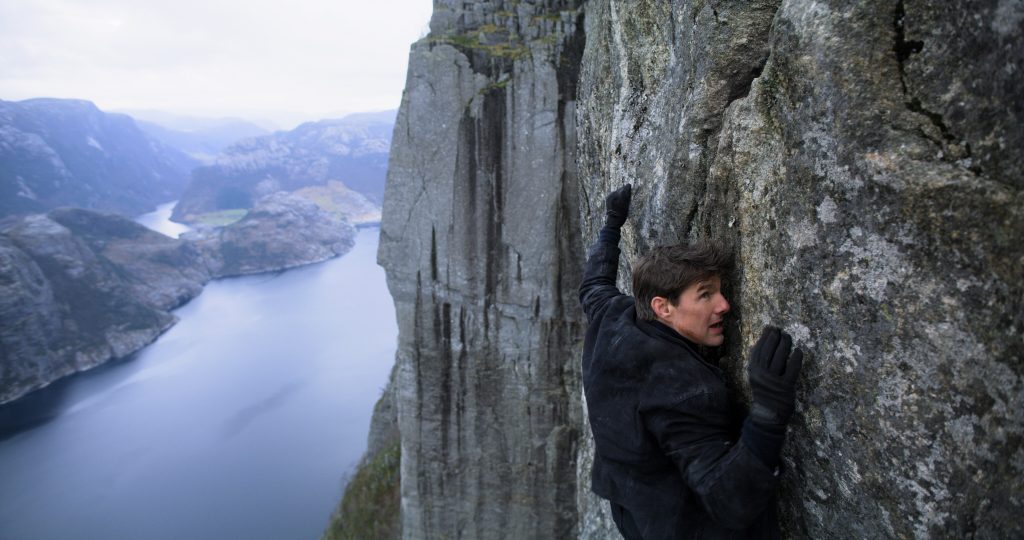
Looking at the finished film, do you marvel at how it all comes together?
I’m proud of the film and what we achieved. I kind of prefer the great outdoors stuff, so I preferred the New Zealand work, being in helicopters in the mountains and seeing what no one else would see. But it’s nice to have the variation, because we were in the middle of Paris for eight weeks and within 48 hours we were in the middle of nowhere in New Zealand in the mountains. It was a bit of a shock to the system, but you could suddenly breathe and relax a bit more.
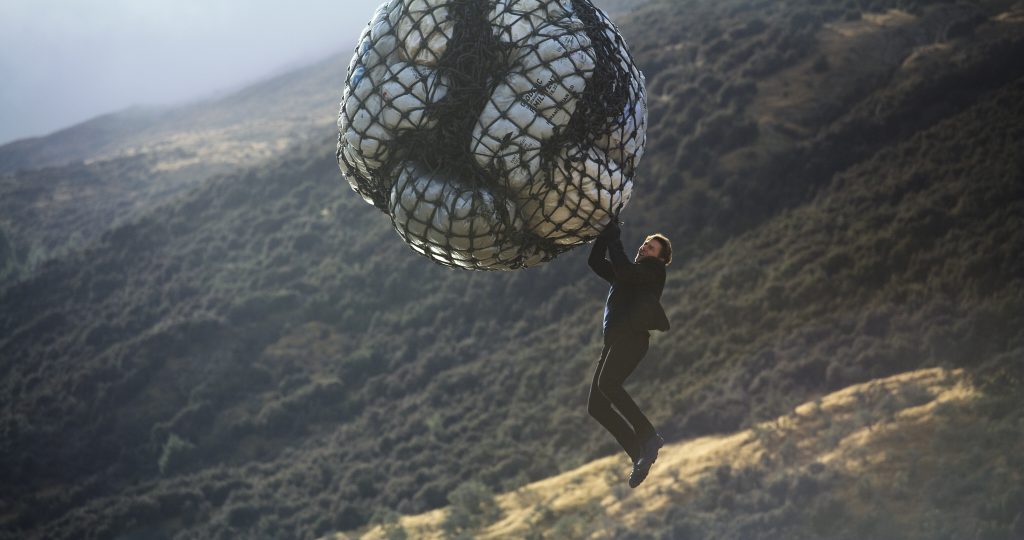
Featured image: Tom Cruise as Ethan Hunt in MISSION: IMPOSSIBLE – FALLOUT, from Paramount Pictures and Skydance. Courtesy Paramount.



